pectus excavatum baby causes
It can also develop in a baby after birth. Pectus excavatum affects about one in.

Newborn Care Chest And Abdomen Philadelphia Fight
Ad Shop Devices Apparel Books Music More.
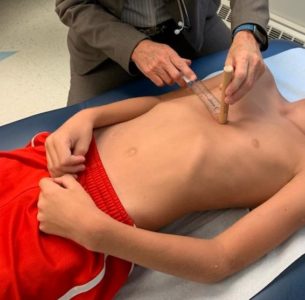
. The condition is not always noticeable at birth but is often apparent by the time a child is 2 to 3. The patient was found to have pectus excavatum on examination and atrial fibrillation with rapid ventricular response and a right bundle branch block on electrocardiogram. Also known as sunken chest or funnel chest pectus excavatum can be corrected with the minimally invasive surgical technique called the Nuss.
Pectus excavatum also known as concave chest or funnel chest is a deformity of your childs chest wall. The depression in the chest is due to abnormal growth of the cartilage that attaches the sternum to the ribs. A 24-year-oldwoman presented to the emergency department ED with new onset of palpitations.
Pectus excavatum is abnormal growth of the ribs and breast bone resulting in a sunken chest. Pectus excavatum is an abnormal development of the rib cage in which the sternum breastbone grows inward resulting in a noticeable and sometimes severe indentation of the chest wall. With pectus excavatum the sternum goes inward to.
The cartilaginous portion of the rib is very likely the main. She underwent synchronized cardioversion which restored normal sinus rhythm. The breastbone or sternum and some of the ribs grow abnormally causing a depression in the middle of the chest.
Pectus excavatum is a structural deformity of the anterior thoracic wall in which the sternum and rib cage are shaped abnormally. For additional resources about sunken chest contact our Center for Families Resource Library. Pectus excavatum is due to too much growth of the connective tissue that joins the ribs to the breastbone.
Pectus excavatum sometimes called cobblers chest sunken chest or funnel chest is the most common chest deformity affecting between 1 in 300 and 1 in 500 adolescents. It probably originates from a genetic defect that results in abnormal musculoskeletal growth. Usually the ribs and sternum go outward at the front of the chest.
The condition affects more boys than girls. It is believed to be a disorder of the cartilage that joins the ribs to the breastbone. Pectus excavatum is a depression caused when the sternum breastbone is abnormally pushed inward.
Pectus excavatum is usually congenital present at. Pectus excavatum especially when mild may cause relatively few discreet. The cause of pectus excavatum is unknown.
The cartilage pushes the breastbone sternum inward. It is caused when several ribs and the sternum grow abnormally which produces a caved-in or sunken appearance of the chest. Pectus excavatum PECK-tuss ex-kuh-VAW-tum is a condition that causes a childs chest to look sunken or caved in It happens because of a defect in the tough connective tissue cartilage that holds the bony part of the ribs to the breastbone.
This produces a caved-in or sunken appearance of the chestIt can either be present at birth or develop after puberty. People with the condition may. Pectus carinatum is a childhood condition in which the sternum breastbone sticks out more than usual.
The cause of pectus excavatum is unknown. The depression can be in the center of the chest or off to one side. Pectus excavatum is a condition in which instead of being level with the ribs the breastbone sternum is sunken so that the middle of the chest looks caved in.
The condition can be mild or severe. What is a pectus excavatum. Ad Pectus excavatum or Sunken chest.
Pectus excavatum occurs in a baby who is developing in the womb. Some children with sunken chest may experience shortness of breath exercise intolerance and chest pain. Pectus excavatum is a congenital deformity of the chest wall that causes several ribs and the breastbone sternum to grow in an inward direction.
This information from Great Ormond Street Hospital GOSH is about pectus excavatum also known as funnel chest. Search for Doctors based on availability location insurance reviews more. Louis Childrens Hospital call 3144545437 or 8006785437 or email us.
Ad Find book an office visit with a Doctor or video chat with them from home. Because of the deep depression the lower ribs can stick out and give the appearance of a potbelly in younger children. Free Shipping on Qualified Orders.
Learn about causes symptoms treatment online. To request an appointment with a physician at St. Pectus excavatum can impair cardiac and respiratory function and cause pain in the chest and back.
Pectus excavatum is a Latin term that means hollowed chest People with this congenital condition have a distinctly sunken chest. Diagnosis and treatment are discussed. A concave sternum or breastbone may exist at birth.
Pectus excavatum PECK-tuss ex-kuh-VAW-tum is a condition that causes a childs chest to look sunken or caved in It happens because of a defect in the tough connective tissue cartilage that holds the bony part of the ribs to the breastbone. The condition is also called sunken.

Patient 2 Note Cafe Au Lait Spots Pectus Excavatum Widespaced Download Scientific Diagram

Pectus Excavatum From A Pediatric Surgeon S Perspective Abstract Europe Pmc
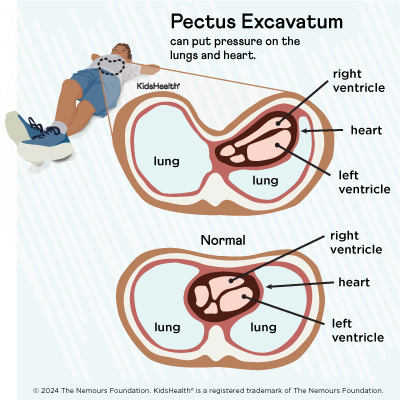
Chest Wall Disorder Pectus Excavatum For Parents Norton Children S

Kidshealth Pectus Excavatum Vacuum Bell Device Akron Children S Hospital
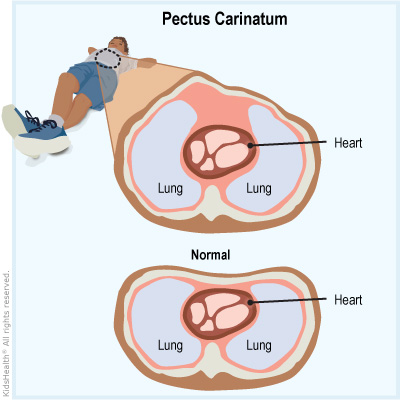
Chest Wall Disorder Pectus Carinatum For Parents Norton Children S

Strength Training With Pectus Excavatum Wasserman Strength
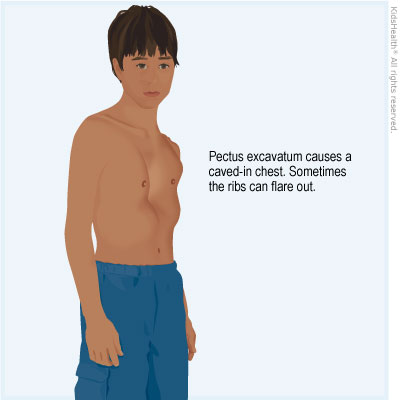
Chest Wall Disorder Pectus Excavatum For Parents Norton Children S

Nuss Procedure For Pectus Excavatum Background Indications Contraindications
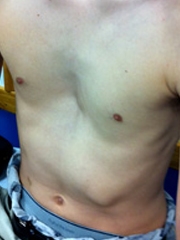
Pectus Excavatum Children S Hospital Of Philadelphia

Help My Baby S Chest Is Caving In Pectus Excavatum Dr Paul Youtube

Full Shot And Limbs At The Age Of 9 Years A Evidence Of Pectus Download Scientific Diagram

Pectus Excavatum And Improve Your Homoeopathic Knowledge Facebook

Pdf Prenatal Diagnosis Of Pectus Excavatum
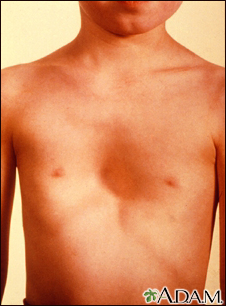
Pectus Excavatum Information Mount Sinai New York
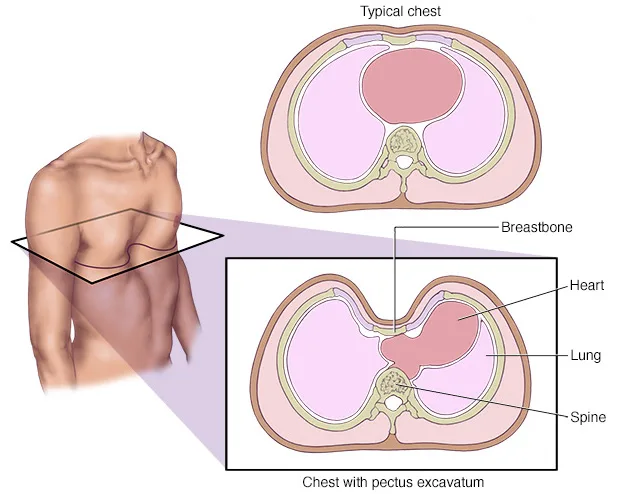
Pectus Excavatum Chest Wall Deformities Child Heart Specialist

Should I Worry If My Child S Chest Is Sunken Cincinnati Children S Blog

